Two Sydney scientists are working on AI technology that could be a gamechanger for MS treatment
Two Sydney researchers are working on a super-fast AI technology that could dramatically improve outcomes for people living with multiple sclerosis.
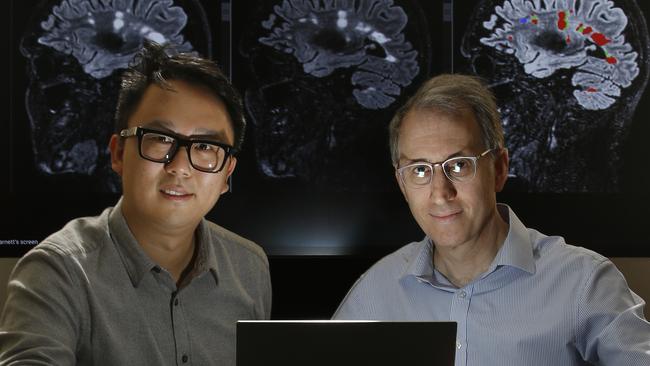
Wentworth Courier
Don't miss out on the headlines from Wentworth Courier. Followed categories will be added to My News.
Treatments for multiple sclerosis have come a long way in the past two decades. While a cure has not yet been discovered, there is now a suite of drugs available to help treat people effectively and change their lives. And artificial intelligence is set to become part of this mix.
Two researchers at the University of Sydney were recently announced as the recipients of a major grant from MS Australia to fund their work on AI technology.
Professor Michael Barnett and Dr Chenyu Tim Wang are working together to develop AI tools that will analyse MRI scans to detect MS progression before symptoms appear.
There is a saying in neurological circles that “time is brain”. Speed is of the essence for most multiple sclerosis patients and this technology could improve outcomes and allow doctors to intervene earlier to prevent disability.
“Conventionally, neurologists and radiologists look at patient’s brain MRI scans for the development of new MS lesions, which indicates active disease or suboptimal treatment. These are the areas of inflammation and damage in the brain that are characteristic of MS,” Professor Barnett said.
“However, MRI and clinical assessment fail to capture changes associated with gradual deterioration in MS. The MRIs look the same. The patients say they are getting worse despite the fact that they are not having any discrete relapses.
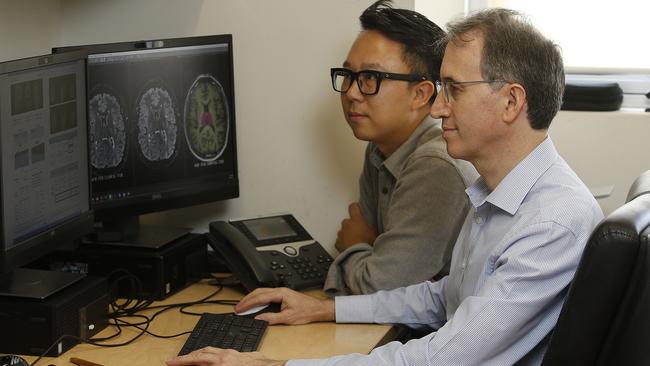
“We came up with ideas on how we might capture that gradual progression…and designed a number of MRI biomarkers to achieve this.
“In order to generate those biomarkers in a useable way, we will integrate them into clinical practice with AI.”
Barnett and Wang come from different backgrounds. Barnett is a clinical neurologist who runs the MS clinic at the Royal Prince Alfred Hospital and Wang is an engineer who specialises in computational neuroimaging. They are working together at the Brain and Mind Centre at the University of Sydney.
It is hoped that within three years they will have an AI tool that can eventually be used in hospitals and research, including clinical trials, around the world.
While AI is often in the news for all the wrong reasons, this time the technology is being employed to change lives. Instead of waiting for days for a specialised research lab to detect these subtle changes on an MRI scan, they predict the AI will be able to do it in seconds.
“The AI technology will assist the existing clinical workflow and help us to deliver the analyses in a much more precise, accurate and efficient way,” Dr Wang said.

“Some of the most important analyses take many hours when performed in a research lab using manual or semi-automated methods. For example, quantitative lesion activity analysis for patients with numerous lesions in the brain may take a researcher up to two days to complete accurately.
“With AI we can accelerate these processes with speed and accuracy that is simply beyond human capacity. Even for complex cases, analysis of brain lesions can be completed within two seconds.”
One of the main concerns about AI technology is that it will take people’s jobs. This is already happening in other industries but Barnett is keen to emphasise that this is not the plan with their project.
He points out that there is a shortage of radiologists in Australia. An MRI scan generates thousands of images and to look through each image to spot minor changes is a “difficult and demanding” task which is eminently suited to AI.
“We have no intention of replacing radiologists,” Professor Barnett said.
“My wife is a radiologist and the Head of Radiology at St Vincent’s Hospital in Sydney (Associate Professor Yael Barnett). The last thing I want to do is replace my wife because I might just end up with a divorce!
“We want these tools to be seamlessly integrated into their existing clinical workflow - so that the radiologist and the AI tools work in tandem to increase both accuracy and productivity - helping patients while improving widespread medical imaging workforce shortages.
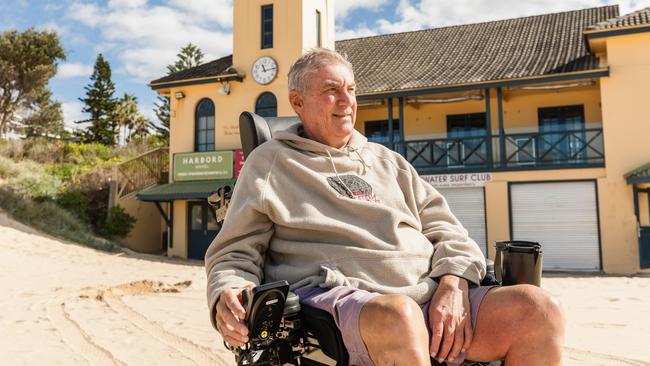
“How do you trust the AI? The whole point is there has to be a human in the loop. We are not advocating anything else.”
The pair also hope their AI tool will work in tandem with future treatments. There are currently drugs in trials that target the gradual progression of MS and being able to monitor brain changes in patients on these new treatments would be very valuable.
“At the moment the biggest unmet clinical need for patients with MS is finding treatments for this gradual worsening of their condition,” Professor Barnett said.
“(The current medications on the market) are very good at reducing the formation of new lesions of patients with MS but they really don’t target the pathology that drives this gradual progression.
“In order to develop these drugs, and there are a handful of these in clinical trials, you need an accurate way to measure their effect.
“Similarly, once we have these drugs in clinical practice, having an accurate biomarker that can say ‘yes the drug is working’ or ‘no it’s not’, will be critical.”
MS prevalence is on the rise in Australia and worldwide. More than 33,000 Australians live with the disease and it is the most commonly acquired chronic neurological condition affecting young adults. They are most often diagnosed between 20 and 40 years of age.
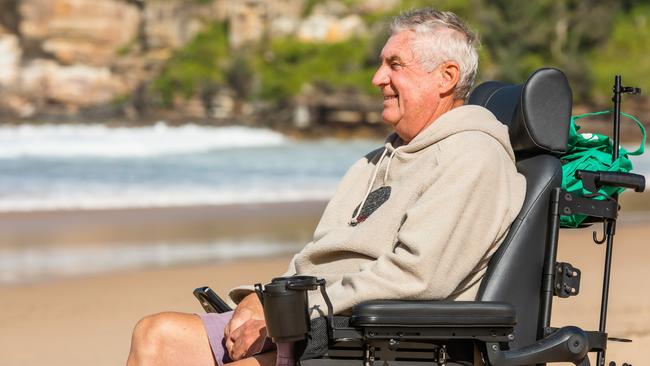
Wayne Raffo, 63, from Freshwater, was diagnosed 17 years ago. He was out surfing one day when he couldn’t get up on his feet and got out of the water as soon as he could as he thought he would injure someone.
He went to see a neurologist at St Vincent’s Hospital and was told he had MS.
Raffo has five lesions on his brain and one on his spine which affect his left side. He uses an all-terrain wheelchair to get out and about, including on to the beach, and has learned to live with the condition. Twice a year he has an infusion of a drug called Ocrevus and this helps keep the lesions at bay. He has had about 15 MRIs since his diagnosis and is hopeful the disease will not progress to affect his right side.
“I see my neurologist once a year. He puts me in for the occasional MRI and he will have a look at the lesions on my brain to what they were 17 years ago. They are pretty much the same,” Raffo says.
“I have one on my spine that is causing the disability. The drug he’s got me on is an infusion every six months. (He says) it’s never going to cure you, just to make sure that little pinprick in my spine stays open enough for me to keep going the way I am.”
Raffo keeps tabs on all the latest research into MS and was interested to hear about the latest developments in AI. He is hopeful that scientists will find a cure for the condition.
“If they could find something that could enable me to go back to what it used to be, fantastic,” he says.
“I stay abreast of it, it’s interesting and it might help me one day.”
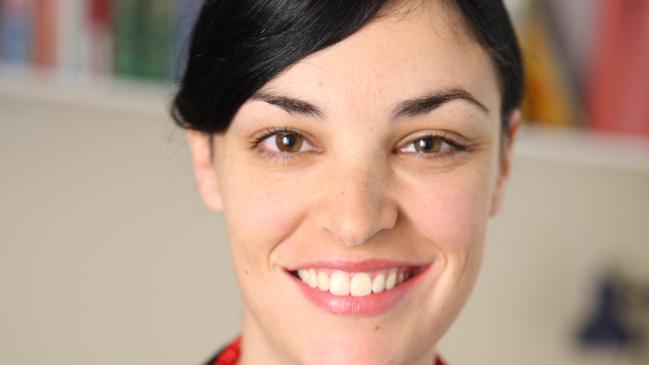
MS Australia is also excited about the potential of the AI project. Dr Julia Morahan is Head of Research and oversaw the latest grants round of $4.5m to a variety of Australian researchers, $750,000 of which is going to the AI team. She wants to see people on the right treatments as soon as possible as this improves outcomes in both the short and long terms.
“For us at MS Australia, we are always pushing the idea that early intervention and early treatment for people with MS is really crucial,” Morahan says.
“This is a great use of AI. People are sometimes a bit trepidatious about what it means and what it’s going to do. This is exactly where it should be ... it’s the use for good.”
World MS Day is on May 30. For more information, go to msaustralia.org.au
*An earlier version of this story was published on May 14. Some quotes have been amended.


